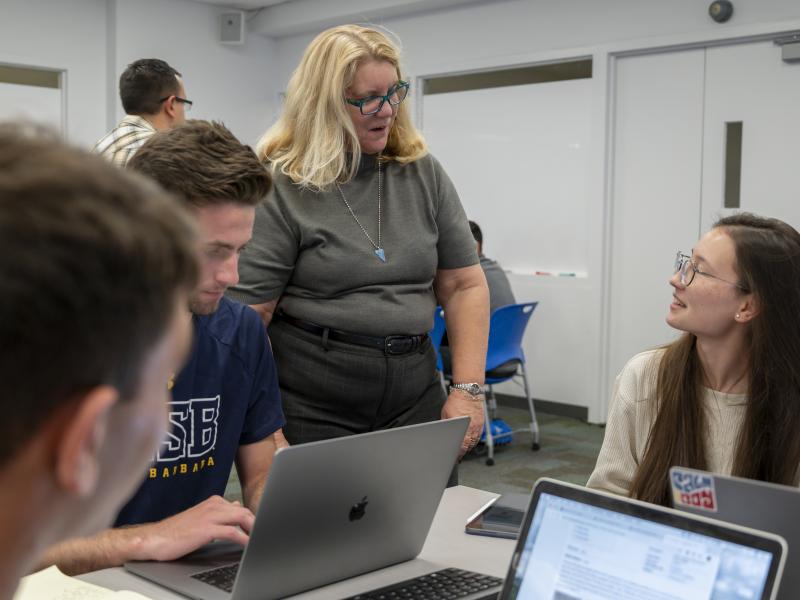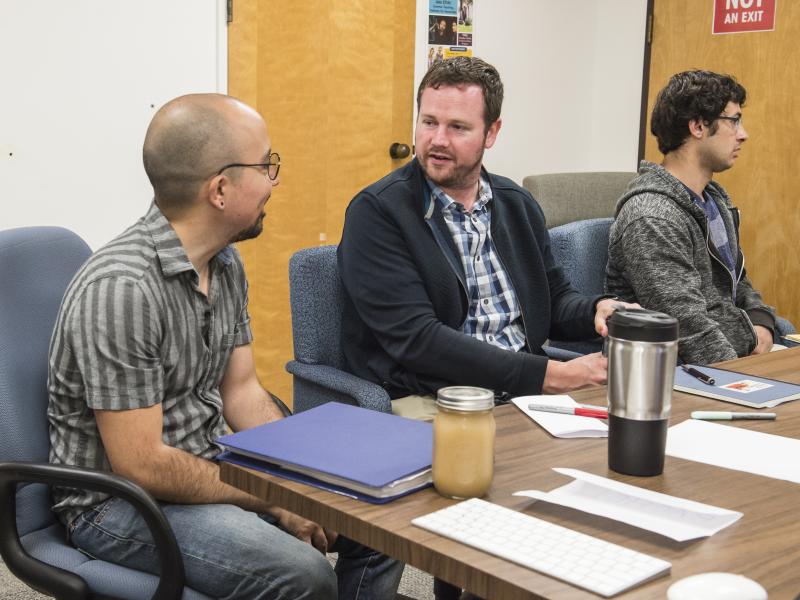Most students don’t go into a course intending to be academically dishonest. Cheating is most likely to occur when students feel unprepared and overwhelmed. As instructors, we can structure our courses for students to succeed, reduce opportunities for academic dishonesty, and report academic integrity violations that do occur. Reporting incidences helps ensure that students are evaluated fairly and equitably on assessments. Visit the Office of Student Conduct website to learn about What counts as academic dishonesty and When and how to report academic dishonesty.
Design Academic Integrity Into Your Courses
“We cannot expect students to act in ways that are respectful of academic integrity if we don’t explain what it is, why it is so important, and teach in ways that reflect its importance.” - Sefcik et al. (2020)
Inculcate academic integrity as a fundamental value rather than as a set of forced compliances. Not all mistakes are dire, so balance enforcement of consequences for academic integrity violations with opportunities for students to learn from their mistakes.

- Engage students in discussions about integrity and its implications for research, education, and professional conduct. Have students review a discipline-specific ethical code or direct them to review the International Center for Academic Integrity’s ‘Fundamental Values of Academic Integrity’. Ask teams of students to create their own academic code of ethics.
- Tell students what kinds of resources are acceptable and which are unacceptable for a given assignment/exam. Be explicit about citation practices, collaboration, and standards for student work.
- Ask students to affirm their integrity on assessments to remind them of their desire to act with integrity. For example, for quizzes in Canvas the first question of a quiz could be asking students to check a box saying that all submitted work will be their own.
Most instructors don’t intentionally design assessments to be punitive experiences, but that’s sometimes how students perceive them. Our goal is to measure student learning and we want our students to be successful. Consider how your assessments might unintentionally foster academic dishonesty for students who don't have good study or time management skills. Ask yourself the questions below and alter your assessments or activities, where appropriate.
- Is my assessment overly stressful because it is high-stakes and students tend to cram for it? What will help students actually study regularly and not just cram (or is cramming okay)? How can I help students prepare earlier to be “successful” on the assessment?
- Is it okay (even great) for students to work on homework or projects together? How can I encourage students to work together to learn and practice the material? Incorporate relevant and thoughtfully-conceived group work into your course to disincentivize academic dishonesty and illustrate the social (rather than just individual) importance of academic integrity.
- Does it matter if students have their notes available during a timed assessment, or do they need to memorize things? Allowing students to bring study helps to exams (e.g. one page of handwritten notes), encourages them to study and reduces their perceived need to be dishonest.
- Could you split a larger project into smaller pieces that students turn in over a few weeks so they don’t cram (e.g. a bibliography, outline, peer review, drafts)?
- Can you use media instead of writing to check students knowledge and ensure they did their own work, like submitting a video/audio “think aloud” of them solving a problem, asking a question, doing peer review, explaining a concept, or reflecting on a project?
- Are there activities students could do during section or as homework to prepare for an exam or workshop their papers/projects (so they don’t stress out as much and you have samples of their work)?
- Do you have old exam questions or prompts that students could use to practice before an exam? Consider giving students many opportunities to take practice exams and get (automated) feedback on their performance prior to the real exam date.
Resources versus Restrictions
Students live with constant access to online information and digital tools. Where possible, make access to online resources a tool rather than a restriction.
- Use common online tools from the UCSB Library to teach students information literacy skills, like evaluating sources of information for criticality and rigor, citation protocols, and distinguishing primary from secondary sources.
- Build collaboration into some of your course assessments so that students can study and learn together without worrying about negative consequences sharing ideas and information.
- For online exams, consider allowing students to access materials, but use the quiz timer, quiz bank, and question or response randomization so students receive different versions of the exam and don’t have extra time to search for answers.
Backchannels
Text or voice-based backchannels (e.g. Nectir, Slack, Discord) are real-time communication tools to help students and instructors share ideas, questions and answers. Use backchannels to promote communication and collaboration in your class, like homework help, peer review, coordinating group work, and asking questions. Avoid types of assessment where backchannels can be used to cheat on exams.
Contract Cheating
To decrease the likelihood that students will “contract” somebody else to complete assessments for them (often purchasing papers online), try the following suggestions:
- Create assignments that are meaningful and authentic to how people in your discipline work with the course content, like presentations, analyses of student-collected data, collaborative projects, websites, and other media.
- Create formative assignments that build up to larger assessments so you become familiar with students’ styles and work.
- Integrate individual or personal aspects to paper/project requirements so students connect it to their lives, interests, and commitments.
- Ask students to reflect on their experience of learning course-specific content in a video to verify identity, and provide low-stakes writing assignments that allow you to recognize their styles and personalities so that assignments that don’t match previous work stand out more readily.
Homework “Assistance” Websites
Study websites like “Chegg” and “Course Hero” reward students for uploading solutions to your old exams and assignments. It is best to assume that students have access to solutions for all of your past assessments, and update them to prevent academic dishonesty. Even small changes like location, names, and numbers can help. You can report unlawful posting of your course materials to the Office of Student Conduct to ask them for help taking down your content, if needed.
English Language Learners
Students will arrive with different levels of English language proficiency and academic competence. Try to use clear, straightforward language for course communications, assignments, and assessments. Encourage students to use the Campus Learning Assistance Services in the Student Resource Building for support and guidance.
Students with Accommodations
Instructors are responsible for accommodating students who have a disability registered with UCSB’s Disabled Students Program (DSP). DSP will send instructors an email notification for each applicable student in their course along with a list of specific accommodations for that student (e.g. extra time on exams).
Cultural Values
Some students come from cultures where value is placed on precise repetition of learned materials. Such students may have a difficult time distinguishing between original work, citation, and plagiarism so be prepared to provide appropriate resources and guidance.
Detecting Cheating and Plagiarism
It is easier for you to detect academic dishonesty when you familiarize yourself with your students’ writing and problem-solving styles using formative assessments that build up to larger summative assessments like think-alouds, hand-written work, short writing assignments, homework backchannels, and Google Docs. You can use the internet to search for plagiarized content using quotation marks around suspicious phrases to search for exact matches. Google Assignments in Canvas also has an originality checker tool. Instructional Development has a program, called Copyfind, that can search for copying between papers in a collection of text-based documents. It can also compare papers from previous quarters with the current quarter to look for “generational copying”. Contact us at info@otl.ucsb.edu for the software or to have us run the program for you.
Proctoring In-Person Exams
Create multiple versions of the exam (on different color paper for each version to help you sort them for grading and ensure students near each other don't have the same exam).
- When possible, spread students out in the room and/or assign seats.
- Frequently “walk the rows” or place yourself in strategic points in the room that allow you to see what students are doing.
- Make and enforce rules for what students can bring to their desks to take the exam (e.g., only pencils/pens, backpacks stay in front of the room).
- Collect and re-distribute blank blue books: Ask students to bring in a blank blue book which they will turn in to you. Then redistribute the blank blue books to the students for the exam. This prevents students from showing up to an exam with pre-written content.
- If feasible, check IDs to prevent students from asking others to take the exam for them.
- Have students write their exit time when they turn in an exam to provide an overview of relative student exit times, which may help identify or confirm potential instances of cheating/copying.

Academic Integrity Violations
A lack of consequences for academic dishonesty conveys to students that cheating is acceptable and that it works. Further, it undermines the value and importance of your course, assignments, and learning more generally. Some instructors prefer to deal with violations of academic integrity by talking directly with the student, giving no credit for the assessment, or offering a second chance. It is university policy for instructors to report all academic dishonesty, even if there will be no formal class or university-level penalties. Reporting ensures that there is an ongoing record of student behavior so that repeated misconduct can be noticed and addressed. It also helps support students’ understanding and awareness of the fundamental values of academic integrity: Honesty, Trust, Fairness, Respect Responsibility, and Courage.

More Resources
Bush, Katie. “Building Academic Integrity Into Your Course.”
Hasinoff, Amy. (2018) “Do You Trust Your Students?”
Mundorff, Deborah. (2019) “Ten Course Design Strategies to Minimize Cheating.”
Sefcik, L., Striepe, M., & Yorke, J. (2020). Mapping the landscape of academic integrity education programs: What approaches are effective? Assessment & Evaluation in Higher Education, 45(1), 30–43.
University of California San Diego, https://academicintegrity.ucsd.edu/. “Combatting Contract Cheating” and “Ensuring Integrity in Testing.”